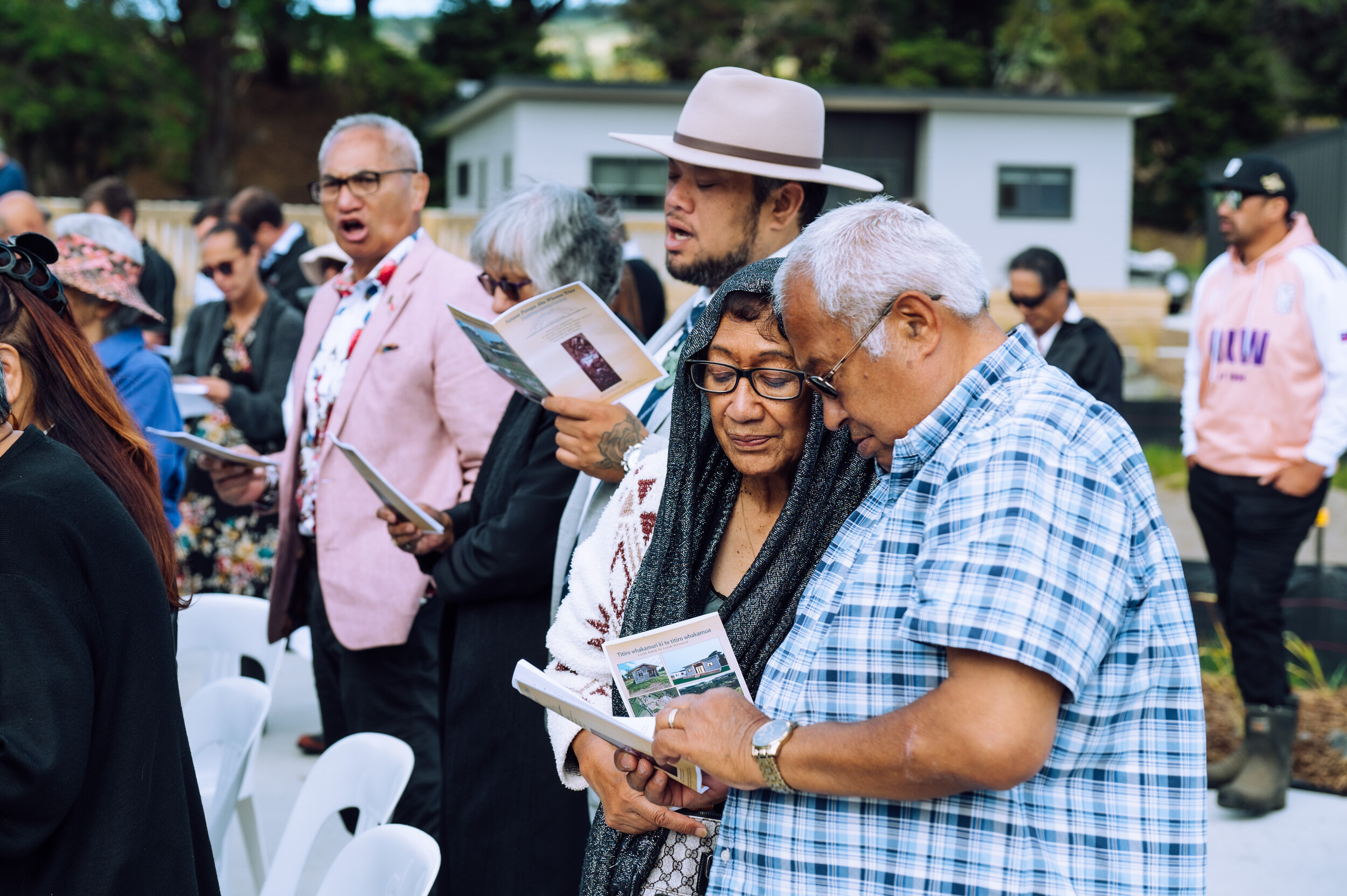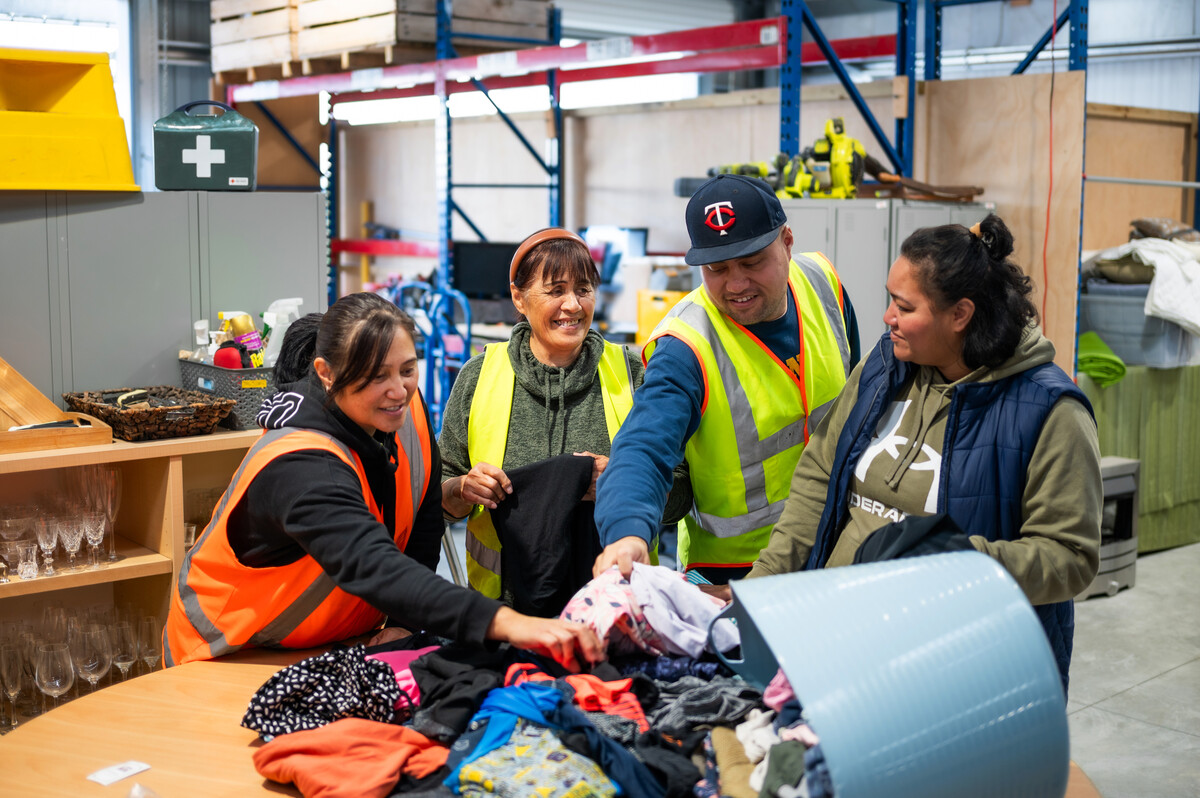
Netana Panapa Ahu Whenua Trust are carving a future for their hāpori grounded in Te Ao Māori through the development of a sustainable Papakāinga on their whenua in Ahikiwi.
In 2024, Foundation North approved a grant to support Netana Panapa Ahu Whenua Trust (NPAW) in the development of their Papakāinga project.
Listen to the story:

Inheriting more than the whenua
A small settlement south of Kaihu Village, the story of this Papakāinga starts over 100 years ago, when Ngāti Whātua Chief, Parore Te Awha gifted the whole of Opanake (now known as Kaihu) to Tupuna Rangatira Panapa Hohapata and Kuia Rangatira Te Ao Mamaku. Following his passing in 1910, the whenua was succeeded by Tupuna Rangatira Panapa Hohapata’s children – and would be directly passed down through six generations prior to being formally settled as a Māori Land Court approved trust as NPAW in 2008.
Each generation inherited more than just the whenua, they inherited their tupuna’s intention for the land to provide housing and food sovereignty for the descendants of Ahikiwi. When poor housing conditions left kaumatua, kuia, and whānau living on the marae, NPAW recognised the time had come to make this dream a reality.
With a vision to see whānau of all generations living healthy lives grounded in Te Ao Māori, NPAW made the decision to utilise the whenua to create a Papakāinga next to Ahikiwi Marae and enable whānau to return to their ancestral home.

Nothing about us, without us
Anchored in a Te Ao Māori worldview from the outset, NPAW recognised that community voices were essential to the success of the project. Over two years, NPAW held hui with the wider hapū to develop a strategic plan that incorporated their aspirations for the Papakāinga and the underlying perspectives and values that would guide the project.
These discussions added necessary context to the project, and supported the intention for the Papakāinga to go beyond housing and fully utilise the whenua to strengthen the capacity, capability, and wellbeing of the hāpori. Community insights revealed key considerations for the project that would enable NPAW to develop an approach that would serve current and future needs.
After years of careful consideration, learning and planning, the Papakāinga kaupapa emerged. Additional to providing healthy and affordable homes, the project aims to enable whānau to become self-sufficient, create opportunities for cultural re-connection, revitalise te taiao, provide educational and employment pathways, and preserve intergenerational Ahikiwi mātauranga and tikanga.
“Te Ao Māori is connected to centuries of relevance in terms of tikanga, visions, practices, beliefs, culture, and understanding. This is not simply providing housing for 10 whānau, it is perpetuating historical housing needs, lifestyles, and the inherent desires that run through the veins of descendants today and will continue tomorrow.”
Grounded, connected
Healthy communities require strong foundations, and access to quality housing plays a key role in supporting individual and collective wellbeing. Grounded by their kaupapa, NPAW understood that the Papakāinga whare were part of a bigger picture.
Intergenerational trauma and the impacts of colonisation are a familiar burden carried by many. Recognising these conditions have formed barriers to positive health, wellbeing, and educational outcomes for the hapū, kaumatua wisdom, traditional hauora (wellbeing) frameworks and the lived experiences of the hāpori enabled NPAW to develop a holistic approach to wellbeing that addresses challenges at the root.
Living on the Papakāinga gives whānau the opportunity to learn their whakapapa, reconnect with Te Ao Māori, and feel a sense of belonging and purpose as a valued and contributing member of a community that supports one another.
To reduce food insecurity, the future additions of mara kai (gardens) and a dedicated area for rearing dry stock will enable the Papakāinga to become self-sustainable and increase access to healthy foods. By learning the maramataka and how to care for the local environment from kaumatua, the community are able to utilise mātauranga and traditional practices in the garden – strengthening cultural connection and supporting the transfer of intergenerational knowledge.
“When whānau have the opportunity to live in healthy homes, they become more grounded and have a sense of purpose that will have positive outcomes for our tamariki and mokopuna for the future.”
Ka ora te whenua, ka ora te tangata – when the land is well, the people will be well
Demonstrating their commitment to ensuring the Papakāinga benefits te taiao, NPAW prioritises sustainable approaches that enable climate action opportunities and maintain kaitiakitanga over Ahikiwi.
Intersecting the whenua are a number of creeks and waterways. Riparian planting, and the restoration of native plants, bushes, and trees undertaken by whānau help protect Ahikiwi streams from erosion and siltation, and create opportunities for residents to support both the community and te taiao.

"Mehemea ka moemoea ahau, ko ahau anake. Mehemea ka moemoea tatou, ka taea e tatou – If I dream, I dream alone. If we dream as a collective, we can achieve our dream."
After completing work on their first fifteen whare and infrastructure, NPAW celebrated the official opening of the Papakāinga in November 2024 with a blessing from RT Reverend Te Kitohi Pikaahu (ONZM).
The Ahikiwi Papakāinga is the product of a dream kept alive over generations. For over 100 years, descendants of Ahikiwi selflessly protected and laboured over the whenua knowing that one day, their collective contributions would create a taonga for future generations to inherit and benefit from.
For Netana Panapa Ahu Whenua Trust, this project has no end date. Just as their tupuna before them trusted future generations to bring their vision to life, the Ahikiwi Papakāinga will continue to be shaped by the hapū for generations to come.




